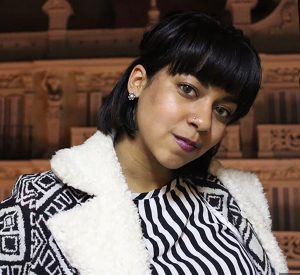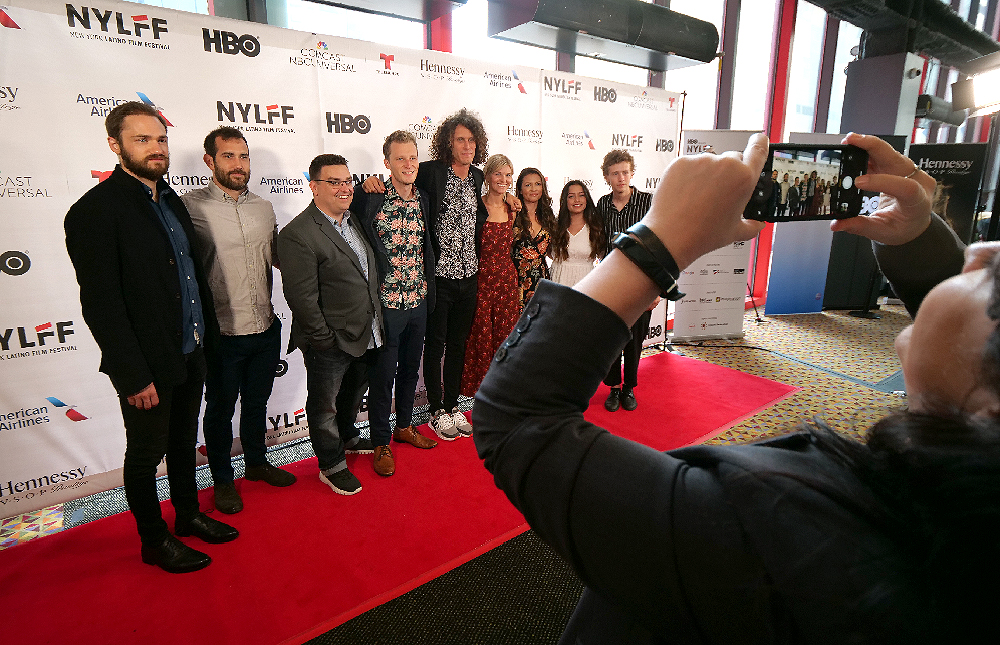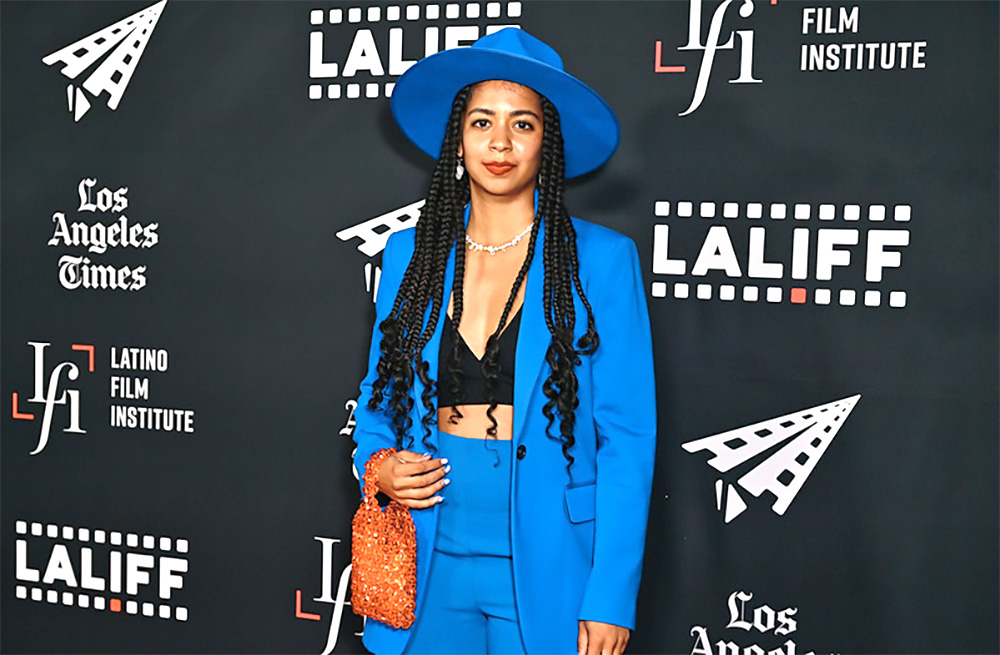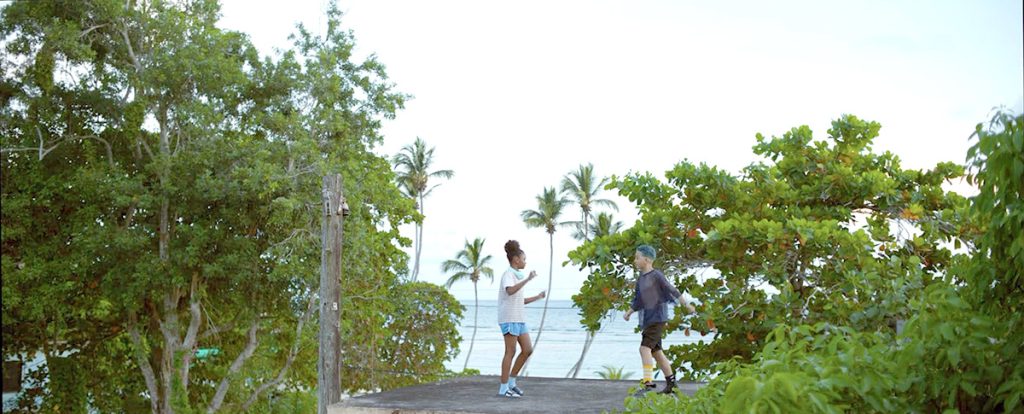© Copyright J. Perez All Rights Reserved
Perez: I watched all the shorts of yours that I could get my hands on after I watched your film SIN RAÍCES at the New York Latina Film Festival. Was that your first time at the New York Latino Film Festival?
Director Gabriella A. Moses: It was, and unfortunately, I couldn’t come in person and they (the NYLFF) played both SIN RAÍCES and BOCA CHICA, but I heard they were very well received. SIN RAÍCES was actually developed through the Los Angeles Latino International Film Festival, and I know both of those festivals (NY and LA Latino Film Festivals) are such hubs for Latina creators and audiences in the States.
It’s really incredible to be able to be in partnership with festivals that support similar voices. Obviously, there’s different demographics and films that come out of the two, but I had not yet been able to screen at the New York Latino Film Festival, so I was very thrilled to have two works showcase this year.
Perez: You have been in a lot of other film festivals, though. How did your experience with both the New York and the LA Latino Film Festivals compare to Sundance or Tribeca?
Director Gabriella A. Moses: So at Sundance, I received a lot of support on the institute side and as a production designer, I’ve had films I’ve collaborated on screen there, but have not screened my own work at Sundance. So the (Sundance) festival is a great experience in that it feels like a filmmaking retreat. It’s so snowy, and in January, it takes a bit of investment to get out there.
I’ve also navigated Tribeca (film festivals) through their programs, I was an alumnus. Tribeca has this incredible program called “Through Her Lens” that partners with Chanel as a sponsor, and you pitch for $80K for a short. I think the last two grand jury prize winners at Sundance were alumni of that program, A.V Rockwell and Nikyatu Jusu. It’s incredible that being part of the Tribeca Film Festival seems to be a steppingstone to Sundance.
The LA Latino International Film Festival, and New York Latino Film Festival are incredible because it’s put on by and for our community. The Latina community is not a monolith. It’s nice to see so much representation. The two coasts have different demographics of who’s present, but the festivals do a really great job at representing people across the spectrum, including international-outside the states – creatives.
I’m always out of town for the New York Latino Film Festival unfortunately, but I know that there’s been some incredible partnerships like María Akay who is a programmer at the NYLFF. I’ve talked on panels at other film festivals that she’s a part of.
I know that both festivals always have really great premiering and closing nights. Those events then go on to really represent what Latino culture but also what Latinos as a buying power can do. We really go out and see films in theaters and things of that nature. There’s a great mix of domestic and international at both of those festivals.
Perez: You wrote about starting out at the Tribeca Film Festival taking tickets, and now to be able to premiere there, it seems like it has been an incredible journey. You have a lot of connections within the NY film industry, you’ve been living in New York while filming many of your projects, but you have not lived in LA, where SIN RAÍCES was filmed. Is that correct?
Director Gabriella A. Moses: Yes.
Perez: What was it like filming SIN RAÍCES in a place you’ve never lived?
Director Gabriella A. Moses: So I had three shorts and one short experimental piece (filmed in NY. “Las Mañanitas” was my thesis film about this young girl who sees the Virgin Mary in a piece of queso fresco right before her quinceñera, and thinks it’s a sign she’s supposed to not lose her virginity, which she was grappling with. It’s very whimsical.
Perez: There was a lot of humor in that film.
Director Gabriella A. Moses: Yeah! So, the premise alone is funny because I do gravitate towards drama, though I think drama always needs elements of comedy because that’s life and comedy alleviates everything.
But “Las Mañanitas” was my first true short film, and it was definitely a labor of love. I was born in New York City but raised in Virginia. My mother moved to New York when she was 12 from the Dominican Republic, and then my parents met in NYC. My father’s Guyanese, I have a very Caribbean background. We were able to shoot at my mother’s cousin’s restaurant in Staten Island for that film, my abuelos apartment, and then the church that my parents got married in, also the church I was baptized in, on 106th and Amsterdam.
We filmed the confessional scene in that church, which was really important to me, I was like, “Oh, this is my first film,I know how beautiful that church is” so I thought, “Okay, if we could get it that would be great.” – And we did. We shot on 35 millimeter for free through the school – “Las Mañanitas” was filmed with a lot of favors and having that New York connection was really important.
SIN RAÍCES was part of a larger story, and I thought that the grant I received was aligned with. I actually had applied for another grant they had that year. I didn’t get it, but I received a message from one of the heads who encouraged me to apply again. That experience is a way for me to be transparent about the grant process. For anyone who’s ever applied for a grant or program and found it wasn’t for them -always try again. SIN RAÍCES had been an idea for a series, actually, and it centered around a celebrity adopting a young girl.
The root of the film for me is somebody who is the daughter of immigrants, maybe second or third generation, giving up family for fame. She’s realizing the American dream in a certain way, then realizes she wants family. What would that look like for a woman higher up in her career ala, Rihanna, or Jlo? The woman then adopts a young girl who’s potentially been uprooted and has maybe lost her family. Now this child is being thrown into the spotlight of fame-I wanted to navigate that journey through these two women. I focus on coming-of-age stories about young girls of color, so I wanted to tell the film from the child’s perspective more than anything outlying the film.
It was also a good challenge for me as a filmmaker and creative. The pilot shot in L.A, and I had never shot there, but I had support systems in terms of other filmmakers I went to school with that were in L.A. I thought, “Let me give this a go” and I learned a lot. L.A has a lot of red tape because the industry runs everything. So, it was not as easy, I would say, as shooting with kids in New York or in the D.R, or acquiring locations. There were a lot of different costs and scheduling things that I became more aware of, but that only makes me stronger as a filmmaker. Overall, shooting in L.A was a pleasant experience I was happy to be able to navigate and learn from.
Perez: The location that you chose for SIN RAÍCES was beautiful. Without even knowing that it was in L.A when I was watching it, I was like, ‘This feels like L.A’ from the very first shot.
Director Gabriella A. Moses: It’s funny because the original script for SIN RAÍCES had more exteriors, but it was still a very limited budget, even with the grant. We were going to show a little bit more of the outside. There were talks when I was struggling with budget in the beginning of filming, of moving the shoot into a big home in New York, but I knew it wouldn’t be the same feel. I feel like the home we shot in is very specific and we got really lucky because a lot of houses were very much out of our budget. Then that home came to us at the last hour.
I had done another deep dive on locations and found it. It was right out of the jurisdiction where we would’ve had to pay insane location and permit fees, but it just really worked out for us. I wanted this very clean, absent of personality, transitional space, almost clinical but elevated, for this pop star to live in and then put this little girl in it. It felt like a space they belonged in.
Perez: I wanted to ask about something that I have noticed in all of your films I’ve viewed. There seems to be a use of tension that as a viewer feels unique. I’ve noticed all of your films are shown with a lot of compassion. Characters are never portrayed to be clearly “the good guy” or the “bad guy”- at least from my perspective which then takes away my ability to know where the story is going to go. That created a lot of tension for me. What are your intentions or thoughts on depicting your characters and pulling that tension through your films?
Director Gabriella A. Moses: Yeah, I really appreciate you saying that because – that is our humanity. As a director, certainly when I take off my writer’s cap, I never see anything as black and white. There is a very prescriptive Hollywood way to go about things where you have your antagonist, and you have these very clear conflicts but I’ve always liked the nuance and the gray areas. I was just listening to a screenwriting podcast.
They were talking about how there are always gray areas that make everything more resonant when the good guy isn’t just a hero and is deeply flawed. It allows you to feel some empathy. It’s interesting that you talk about the tension that exists because of that.
I also love sitting with my protagonists’ reactions, and because, at least up to this point, so many of my films are coming of age stories, {sitting with reactions is} really important when it comes to working with young talent, too. Kids are obviously very innocent, still finding their own voice, and perspective, their identities in the world, we are through adulthood too. That creates a space of observation.
A lot of the stories I tell, even with the very visual, world building techniques, and lighting, and production design that I’m implementing and controlling, are stories rooted in a reality. In the real world there is so much nuance and gray areas to all these issues of adoption, sex tourism, abuse in families, like in BOCA CHICA and even LAS MAÑANITAS.
There’s more of a comic take on things, but there’s still difficult topics like, losing your virginity, religion, exploration and guilt. Each of my antagonists and protagonists have parts of me in them that I can relate to and understand. It’s great if that creates tension because tension and also tenderness, are the most important things for me in films as a viewer. So I hope to achieve that in the stories that I tell. It’s great.
Perez: Tenderness and tension do come through, and the result is really surprising. I didn’t know what to expect when I sat down to watch your films, and I always ended up in a completely different place than where I thought I was going to go. We’re coming to the end of the interview. Thank you so much for all your really thoughtful answers. Is there anything else that you want to add? Anything that you’re currently working on?
Director Gabriella A. Moses: Since BOCA CHICA’s premiere, I hope to be going out with my project that went through all the labs. That’s my beacon into the industry as a writer director in the development of a feature called “Leche,” which is a Latina folk lore film. I have the short film “Leche,” that’s a bit of a character study to the protagonist, but the actual feature has developed a lot over the last several years and is centered around Santería and a young girl dealing with grief and moving to the states. I’m continuing to try and elevate female perspectives, Women of Color, and return to my roots in the Caribbean. I want to continue to tell stories in those spaces as well. That’s just very important to me as a first-generation artist.
It was an incredible gift to be brought BOCA CHICA when I was developing projects that felt very aligned and adjacent by Sterlyn Ramirez, who’s my producer on BOCA CHICA, I’m looking forward to continuing to carry this torch and support other female Latina creatives and Women of Color on our journeys because it is definitely a marathon and a constant struggle to get these films and stories out there. So thank you. Thank you so much for taking the time and watching the work.
Perez: Thank you. I really look forward to watching “Leche” when it comes out. Enjoy your time outside of the States.
{Gabriella A. Moses Portfolio}
J. Perez can be reached at z3phouseestablishment@gmail.com




